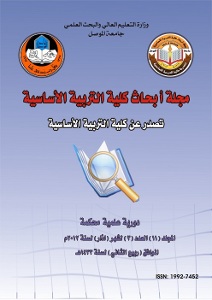The Translatability of Allusive Expressions in Najuib Mahfouz's Novel " Midaq Alley " into English
Abstract
- - . (1947) (1975) - : . . . . . . . . .The paper attempts to highlight the strategies for translating allusion from Arabic to English and how allusion affects the context as a tool of intertextuality in literary genre .The study is based on data collected from an Arabic novel, Zuqaq al-Midaq by Najuib Mahfouz and its English translation by Le Gassick (1975), as well as three translations done by skilful translators-whose mother tongue is Arabic -are reviewed and discussed. Seven texts have been identified as constituting difficulties to translators. Two types of allusion have been recognized , namely, Key phrases (KP) and Proper nouns (PN) .It is found that Le Gassick tries to avoid verbosity in translation especially with PN allusion ,whereas Arab translators take full account of the allusions in that they attain and transmit them faithfully to the target language culture .KP allusion is found to be easier to translate than the PN .Also ,literal translation is a good strategy for KP allusions, whereas cultural substitution , viz. idiomatic substitution is more appropriate for the PN and the KP allusions. PN allusions could be omitted if they are of peripheral priority to the episodes of the novel. However, PN allusion should be rendered if it is used as a metaphor. Footnoting strategy is not convenient every single time, for it spoils the allusion's sense .In other words, in order to make the allusion successful , it should be understood by the readers for whom it was intended . The communicative function of an allusion would be more forceful if the aesthetic function and the scene of the alluded text is preserved . If the frame , on the other hand, is replaced by a culture- specific expression ,the communicative and the aesthetic functions would be presented forcefully , for they match the intention of the TL reader . Consequently, the scene would be more pleasurable to the reader.
